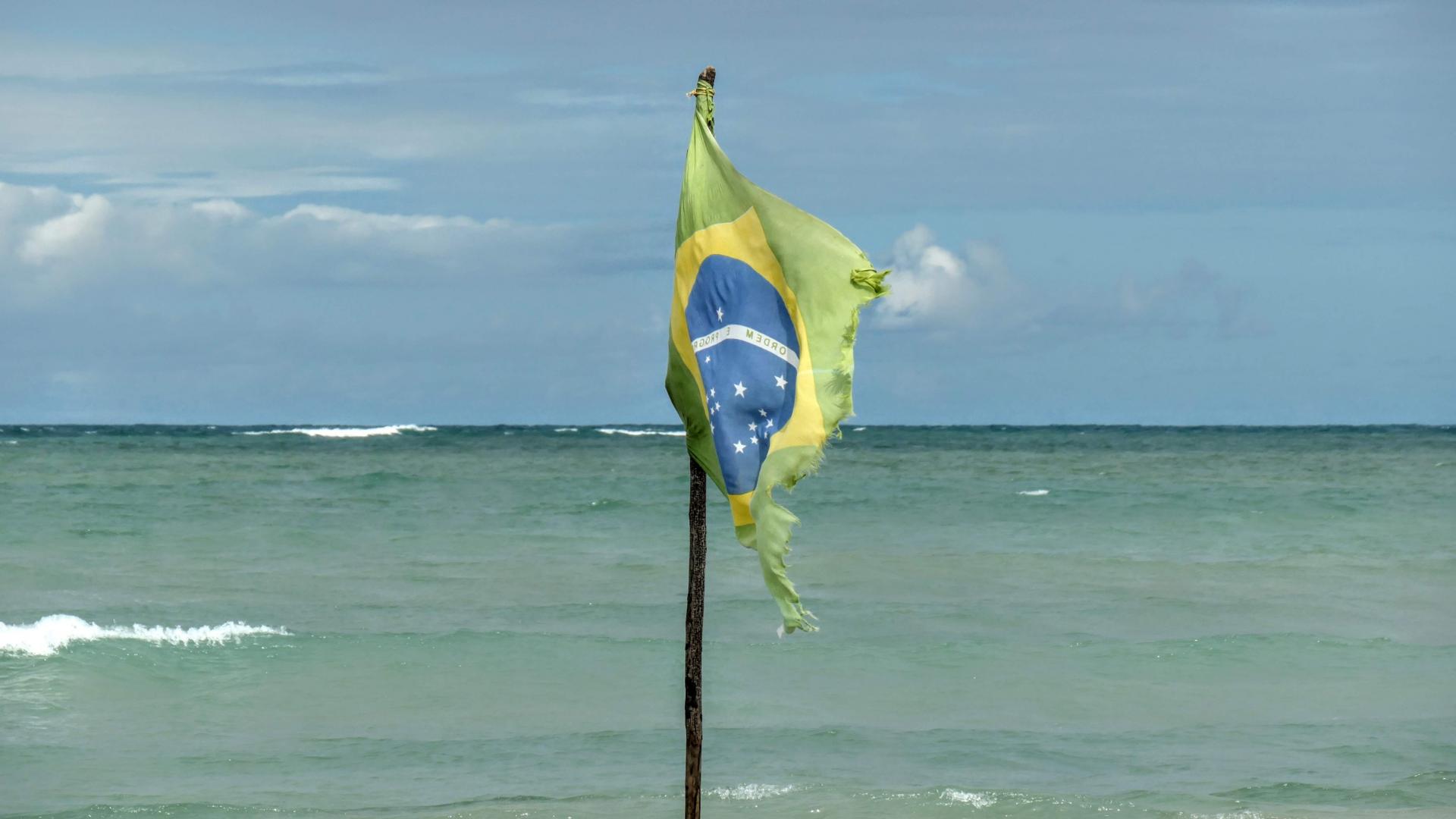Blue, Green, Yellow - The Brazilian Flag

Keyrings, beach towels and shirts, representing the colors of the Brazilian flag, are just some of the popular souvenirs brought home from an unforgettable Brazilian holiday. But who decided what the Brazilian flag should look like? Have you ever thought about where and when the national flag originated?
The Brazilian national flag did not always look the way it does today. Over the years it has actually changed to reflect important events in Brazil’s history.
Brazil’s First Flag
The first Brazilian flag was created in 1822, after prince Regent Dom Pedro declared independence from the former United Kingdom of Portugal on September 7, 1822. Under the Portuguese Empire, the Brazilian flag already contained the iconic yellow rhombus and a green background, however, the middle of the rhombus showcased an imperial coat of arms with a crowned green shield, green coffee and tobacco branches surrounding it. The center displayed a crimson cross of the Order of Christ.
Origin of the colors of the Brazilian flag
You may have heard, that the colors of the Brazilian flag are intended as a tribute to the country's rich natural resources: green representing the forests, yellow the large gold deposits, blue the many rivers and the sea and white peace.
This interpretation sounds beautiful but has no historical reference. The colors of the flag have their meaning and origin in relevant events in Portuguese history and were carefully selected by Dom Pedro.
- Green is the color of the house of Braganza, to which Dom Pedro belonged.
- Yellow is the color symbol of the Habsburgs. The wife of Emperor D. Pedro, Mrs. Leopoldina, belonged to the Habsburgs.
- Blue and white go back to the county of Portucale, from which Portugal emerged.
The history of the present Brazilian flag
The proclamation of the Brazilian Republic took place on the 15th of November 1889. On that day, the Portuguese monarchy was abolished in Brazil and, as a consequence, a number of national symbols were replaced including the national flag.
In the four days between November 15th and November 19th 1889, the Brazilian flag had a similar pattern to that of the United States, with green and yellow stripes instead of red and white. The United States, independent since 1776, was considered a model for Brazilian Republicans. On November 19, 1889, however, a new decree introducing the current design of the flag was passed and signed by Marshal Deodoro da Fonseca, the Provisional President of Brazil at the time.
The conceptual design of the flag can be attributed to positivists Raimundo Teixeira Mendes and Miguel Lemos, astronomer Professor Manuel Pereira Reis and painter Décio Vilares. The main differences to the imperial design included:
- A resized yellow diamond;
- Replacing of the coat of arms of the Empire with the republican blue ball;
- The insertion of the positivist motto Ordem e Progresso ("Order and Progress") in the center of the sphere. This motto was inspired by a citation from Auguste Comte;
- The addition of white stars.
Meaning of the stars of the Brazilian flag
The 27 stars on the flag represent the 26 Brazilian states and the federal district. Their position corresponds to the constellations that could be seen in the sky over Rio de Janeiro on November 15, 1889 at 8:30 a.m. The star Spica is the only one above the band with the inscription Ordem e Progresso. It represents the state of Pará, which in 1889 was the largest territory above the equatorial latitude. The Federal District of Brasilia is represented by the star Octantis, the southernmost constellation in the night sky.
In the beginning, only 21 stars were shown on the flag. With the founding of new states, new stars were also added to the flag. The last change to the flag’s stars was made in May 1992, when stars were added for the states of Amapá, Roraima, Rondônia and Tocantins.
Now you cannot only bring back great souvenirs in the colors of the Brazilian flag from your next Brazil trip, but you can also tell interesting historical facts about it!
Sources: www.bbc.com, www.nationalflaggen.de, www.wikipedia.org

